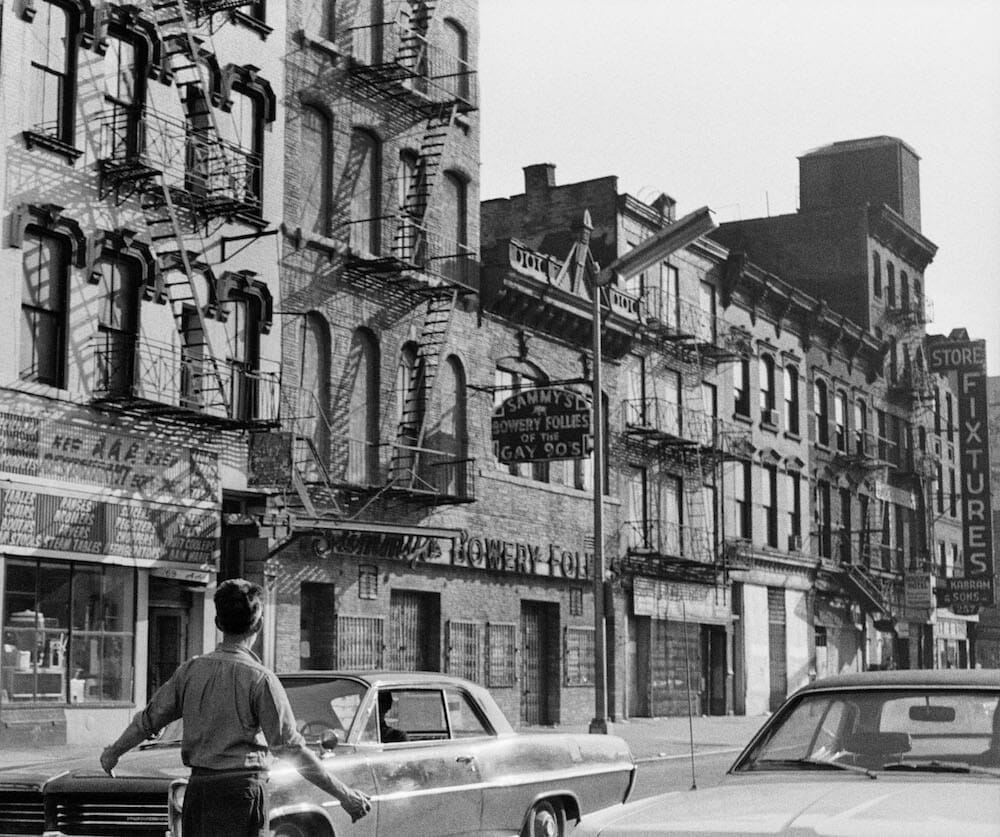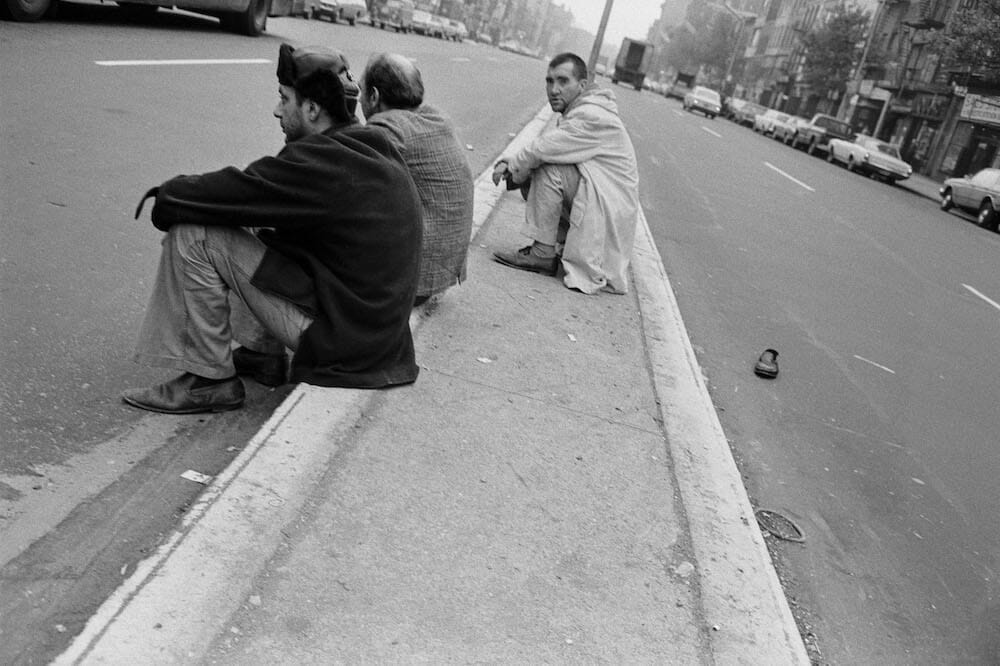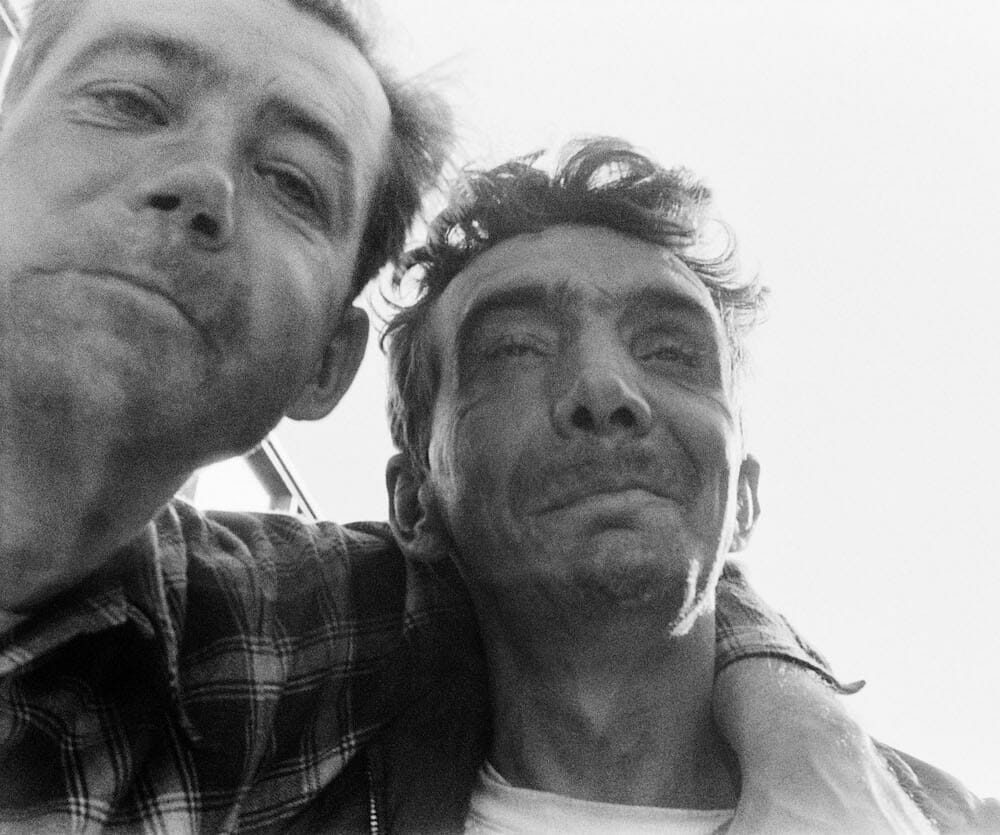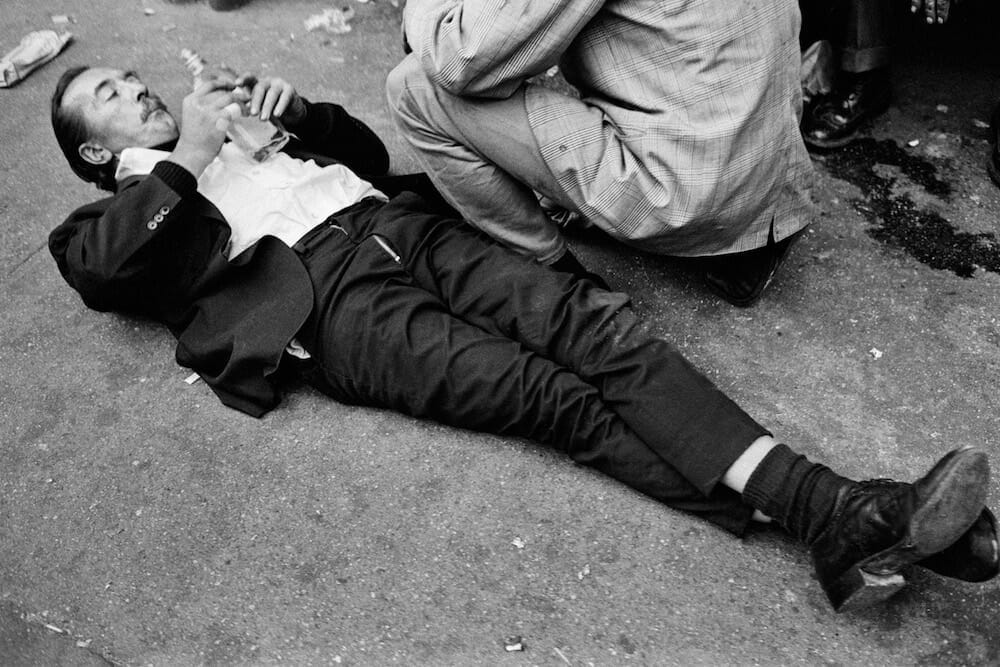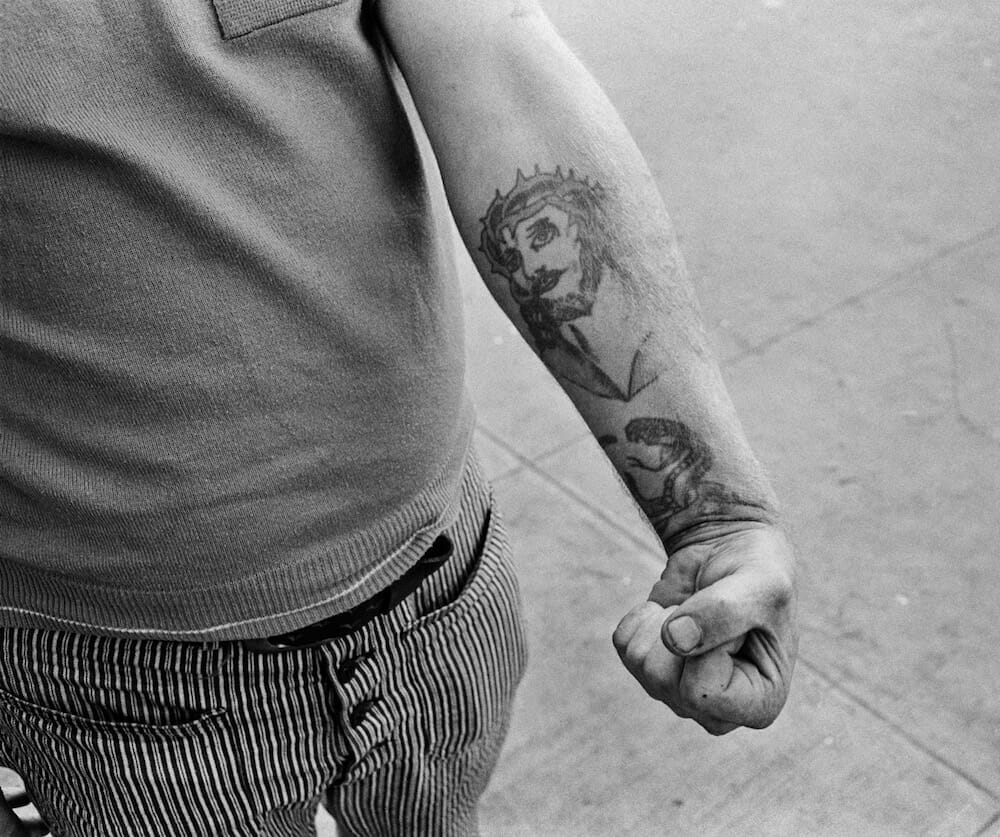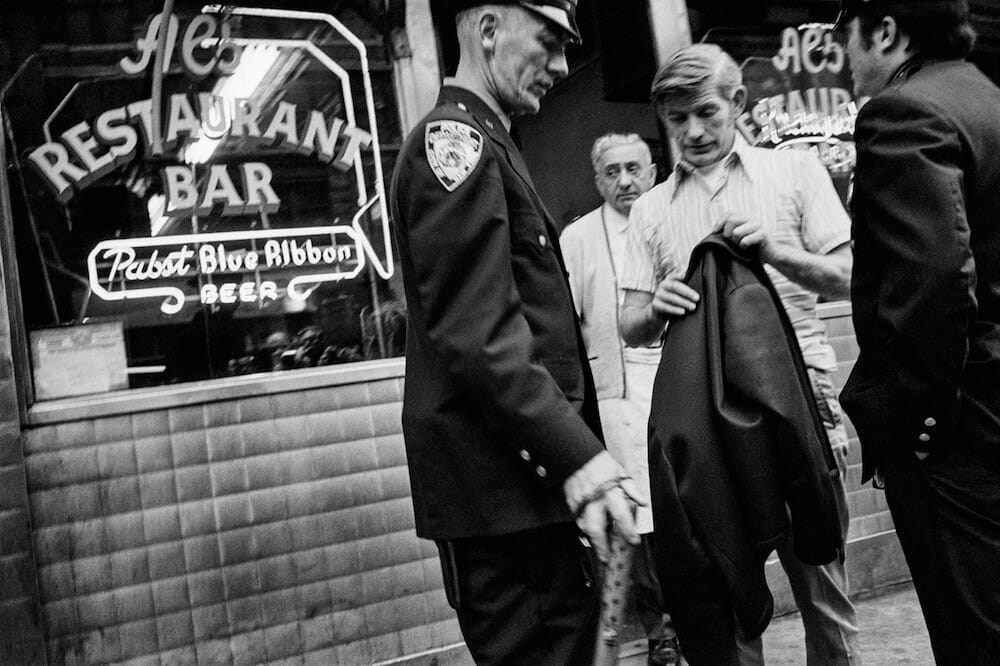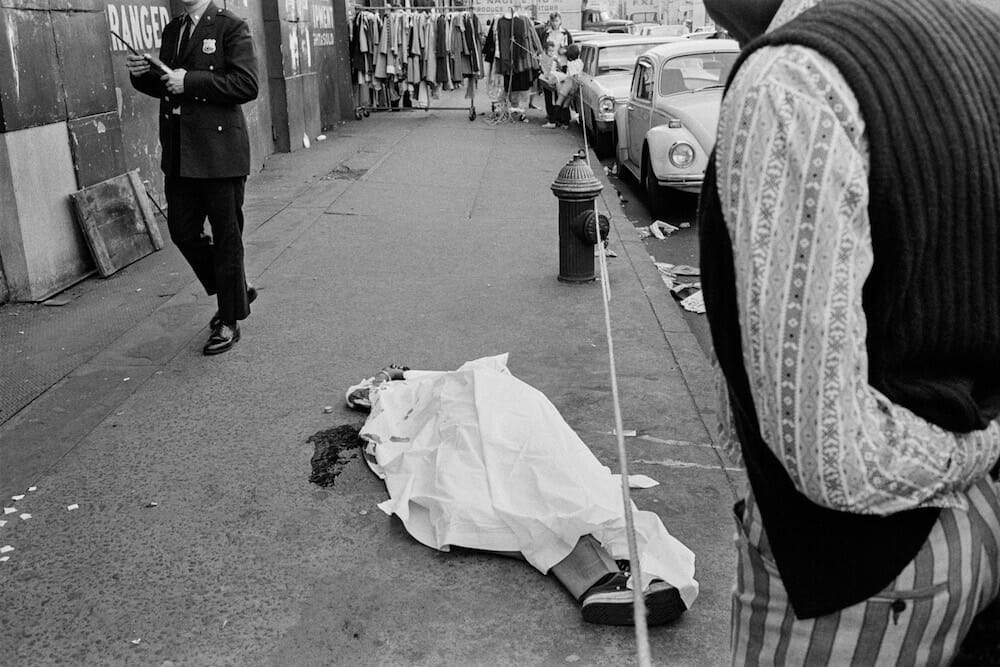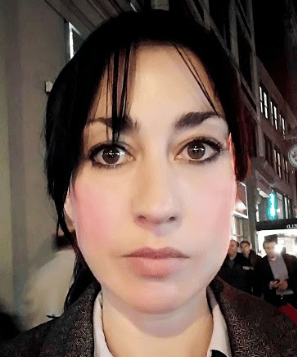Click here to read more Picture This Post reviews of HIGHLY RECOMMENDED books
Photographer Edward Graza’s ON THE BOWERY: NEW YORK CITY 1971 captures the flophouses, bars and grief of the down and out of the pre-gentrifed Bowery
Edward Grazda’s photographic book On the Bowery: New York City 1971 was inspired by Lionel Rogosin’s 1956 docufiction film On the Bowery. The film cast flophouse Bowery boys as themselves, in improvised scenes that supported a day in the life of a down on his luck protagonist. In Grazda’s book, fifteen years later, you might concur that even a glimpse of artifice could be construed as a welcome relief, because the suffering is all too real. By his own admission, this period of his life took a lot out of him. Yet, getting into the thick of down and dirty is where Grazda excels.
We learn from the book’s brief ending text that Grazda took these photographs between September and December of 1971. During that time, when he himself was a Bowery resident, he printed only some of the photographs. In his own words he “felt that they were too intrusive to show.” At the end of 1971, Grazda took off for the antithetic desertscapes of New Mexico and Arizona that formed the bulk of his comparatively glistening collection American Color Slides (1971-1979). This was an understandable switch and delay. The Bowery had taken its toll.
The Bowery is an old thoroughfare that predates the Dutch New York farmland that gave it its name. Prior to gentrification laying claim to the area, the desperate and dejected made use of its exposed underbelly by frequenting the skid row flophouses, such as Uncle Sam House and the Fulton Hotel. These last bastions of cheap temporary accommodation are featured in the book, as well as dive bars, such as Harry’s Bar, which is one of half a dozen drinking establishments on a single block that facilitated staunch alcoholism. For the so-called Bowery bums, bars such as these, haloed by neon beer advertisements, provided a glowing heavenly refuge from the mean streets of Lower Manhattan.
Men are on every page of On the Bowery. They are smoking, drinking, conversing, sleeping, and on one occasion – dead. Most men here are either oblivious to Grazda’s snapshots, or they acknowledge the lens with no mind for adjustment or poise. Less frequently, Grazda’s camera click bends the occupied heads of his unwitting models towards the viewer. We meet hustlers, beggars, and hard drinkers. Many are fallout from deinstitutionalization, chipped and ripped at the seams, dulled by hardship and consequently suitable for the book’s black and white content.
It is as if the sixties never happened, at least not to the Bowery by 1971. Even the seventies haven’t quite begun in this pre-CBGB Bowery era. In an echo of Rogosin’s film, faint traces of the 1950s exist in the keepsake clothes of some of the middle-aged men. They wear checkered pants, upturned collars and greased-back hair. From their street-level observation deck, these outsiders observe what there is of the life that passes them by. Their circumstantial ranking has forced equality upon them, as well as kinship on the sidewalk.
We see this in a photograph of two men, one with his arm around the other, both half-cut, with slippery eyes fallen off the middle distant lens, twinned by their unquestionable drunken codependency. There is a look that alcohol and the elements morph into a human being— cliff-side features, weathered and exposed, and molded by an omnipresent cold shoulder.
A suited man wearing brogues is a notable exception. He lies on his back on the sidewalk, head up slightly, tilted towards the last few drops from the liquor bottle in his band-aided grasp. His chiseled face, aristocratic moustache and louche demeanor could sit him at the head of a dinner party table. if he were properly scrubbed up. A down and out dandy, he stands out from the crowd and the conspicuous wet stains on the ground.
Elsewhere in the book, Jesus’ thorn crown has faded from a tattooed forearm; at its end, a clenched fist suggests aggressive pride in the bearer’s ink branding.
Fragments of a police presence appear on the pages, debilitated by the cycle of both petty and serious crimes. In the most depressing photograph, a bloodied homicide victim’s arm and leg poke out from under a sheet on the daylit sidewalk. Just yards away, we see the only woman in the book together with two small children, standing by a coat sales rack. She wears the air of business as usual.
Grazda’s Bowery chapter took him almost three decades to revisit, which he did at the McDowell Colony in 1999. The individuals in this book have no storylines, nor accompanying text. Though slurred and sullied, and occasionally and deliberately blurred, they momentarily speak for themselves. The affordable flophouses that provided basic lodging and bare essentials are a thing of the past. They can no longer exist at such a steal per night. Similarly, few bars these days willingly let in overt intoxication, even if it is of the quiet innocuous kind. Today, comfort and camaraderie among the destitute occupy comparatively impersonal spaces. Therefore, looking at Grazda’s Bowery collection need not be as bleak an experience as the contents of the book imply.
On the Bowery is a captivating study of standstill figures, at a time that moved on and didn’t look back.On the Bowery: New York City 1971 should especially appeal to those interested in gritty realism and/or historic New York City.
HIGHLY RECOMMENDED
Price $29.95
Published by powerHouse Books. For information and to purchase copies visit the powerHouse books website.
All photos shown here are from On the Bowery by Edward Grazda.


